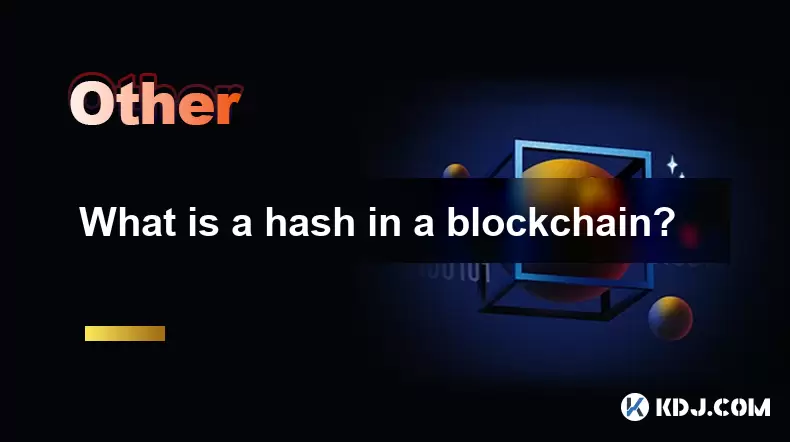-
 Bitcoin
Bitcoin $115200
-2.68% -
 Ethereum
Ethereum $3601
-5.16% -
 XRP
XRP $3.035
-2.96% -
 Tether USDt
Tether USDt $0.9997
-0.04% -
 BNB
BNB $764.5
-5.43% -
 Solana
Solana $168.1
-5.92% -
 USDC
USDC $0.9998
-0.02% -
 Dogecoin
Dogecoin $0.2090
-4.80% -
 TRON
TRON $0.3272
-0.49% -
 Cardano
Cardano $0.7306
-5.00% -
 Hyperliquid
Hyperliquid $39.16
-12.22% -
 Stellar
Stellar $0.3967
-4.96% -
 Sui
Sui $3.566
-5.95% -
 Chainlink
Chainlink $16.55
-6.57% -
 Bitcoin Cash
Bitcoin Cash $552.3
-3.90% -
 Hedera
Hedera $0.2516
-4.69% -
 Avalanche
Avalanche $21.99
-5.75% -
 Toncoin
Toncoin $3.621
-0.28% -
 Ethena USDe
Ethena USDe $1.000
-0.03% -
 UNUS SED LEO
UNUS SED LEO $8.951
0.02% -
 Litecoin
Litecoin $105.9
-3.59% -
 Shiba Inu
Shiba Inu $0.00001232
-5.00% -
 Polkadot
Polkadot $3.640
-5.55% -
 Uniswap
Uniswap $9.048
-7.03% -
 Monero
Monero $301.8
-1.51% -
 Dai
Dai $0.9999
-0.01% -
 Bitget Token
Bitget Token $4.334
-3.66% -
 Pepe
Pepe $0.00001064
-6.17% -
 Cronos
Cronos $0.1367
-5.78% -
 Aave
Aave $259.2
-4.59%
A simple explanation of blockchain! Why is blockchain tamper-proof?
Blockchain, a distributed ledger tech, underpins cryptocurrencies and offers secure, tamper-proof data recording across industries like supply chain and healthcare.
Jun 09, 2025 at 12:42 am

Introduction to Blockchain
Blockchain is a revolutionary technology that serves as the foundation for cryptocurrencies like Bitcoin and Ethereum. At its core, blockchain is a distributed ledger that records transactions across numerous computers, ensuring that the data is transparent and immutable. This technology has garnered significant attention due to its potential to transform various industries by providing a secure and decentralized method of recording data.
What is a Blockchain?
A blockchain is essentially a chain of blocks where each block contains a list of transactions. These blocks are linked using cryptographic methods, creating a secure and unalterable chain of information. Each block in the chain contains:
- A list of transactions
- A timestamp
- A cryptographic hash of the previous block
This structure ensures that once data is recorded on the blockchain, it becomes extremely difficult to change, making it an ideal solution for maintaining a tamper-proof record of transactions.
How Does Blockchain Work?
The functioning of blockchain revolves around a network of computers, often referred to as nodes, which collectively validate and record transactions. When a new transaction occurs, it is broadcast to the network. Nodes then use consensus mechanisms, such as Proof of Work (PoW) or Proof of Stake (PoS), to validate the transaction. Once validated, the transaction is added to a block, and this block is then added to the blockchain.
The decentralized nature of blockchain means that no single entity has control over the entire network. Instead, the power is distributed among all participants, which enhances security and reduces the risk of fraud.
Why is Blockchain Tamper-Proof?
Blockchain's tamper-proof nature stems from its unique structure and the consensus mechanisms that govern it. Here are the key reasons why blockchain is considered tamper-proof:
Immutable Records: Once a transaction is recorded on the blockchain, it cannot be altered or deleted. This is because each block contains a hash of the previous block, creating a chain of dependency. Altering a single transaction would require recalculating the hashes of all subsequent blocks, which is computationally infeasible.
Decentralized Network: The decentralized nature of blockchain means that there is no central point of failure. To tamper with the blockchain, an attacker would need to control more than 50% of the network's computing power, a feat that is extremely difficult and costly.
Consensus Mechanisms: Blockchain uses consensus mechanisms to validate transactions. For instance, in Proof of Work, miners compete to solve complex mathematical puzzles. Once a miner solves the puzzle, the block is added to the blockchain. This process ensures that only valid transactions are added to the blockchain.
Transparency: All transactions on the blockchain are visible to every participant in the network. This transparency makes it easier to detect any attempts at tampering.
Real-World Applications of Blockchain
Blockchain technology has found applications beyond cryptocurrencies. Some of the notable use cases include:
Supply Chain Management: Blockchain can be used to create a transparent and immutable record of the entire supply chain, from production to delivery. This helps in verifying the authenticity and origin of products.
Smart Contracts: These are self-executing contracts with the terms directly written into code. They automatically enforce and execute the terms of the contract when certain conditions are met, reducing the need for intermediaries.
Identity Verification: Blockchain can provide a secure and decentralized method of identity verification, reducing the risk of identity theft and fraud.
Healthcare: Blockchain can be used to securely store and share patient data, ensuring privacy and improving the efficiency of healthcare services.
Challenges and Limitations of Blockchain
While blockchain offers numerous benefits, it also faces several challenges and limitations:
Scalability: Current blockchain networks can struggle to handle a high volume of transactions, leading to slower transaction times and higher fees.
Energy Consumption: Proof of Work, the consensus mechanism used by Bitcoin, requires significant computational power, leading to high energy consumption.
Regulatory Uncertainty: The regulatory environment for blockchain and cryptocurrencies is still evolving, creating uncertainty for businesses and investors.
Complexity: The technical complexity of blockchain can make it difficult for non-experts to understand and implement.
Frequently Asked Questions
Q: Can blockchain be used for purposes other than cryptocurrency?
A: Yes, blockchain has a wide range of applications beyond cryptocurrencies. It can be used in supply chain management, smart contracts, identity verification, and healthcare, among other areas.
Q: How secure is blockchain compared to traditional databases?
A: Blockchain is generally considered more secure than traditional databases due to its decentralized nature and cryptographic security. However, it is not immune to all forms of attack, and the security can vary depending on the specific implementation.
Q: Is it possible to reverse a transaction on the blockchain?
A: Reversing a transaction on the blockchain is extremely difficult and usually requires consensus from the majority of the network. In most cases, once a transaction is recorded, it is considered final.
Q: What is the role of miners in a blockchain network?
A: Miners play a crucial role in blockchain networks, particularly those using Proof of Work. They validate transactions and add them to the blockchain by solving complex mathematical puzzles. In return, miners are rewarded with cryptocurrency.
Disclaimer:info@kdj.com
The information provided is not trading advice. kdj.com does not assume any responsibility for any investments made based on the information provided in this article. Cryptocurrencies are highly volatile and it is highly recommended that you invest with caution after thorough research!
If you believe that the content used on this website infringes your copyright, please contact us immediately (info@kdj.com) and we will delete it promptly.
- Cardano Price, Pi Network, and Crypto Presales: What's the Buzz?
- 2025-08-02 08:50:12
- XRP Fund Success: Teucrium CEO Reveals Trillions on the Horizon
- 2025-08-02 09:10:12
- Challenge Coins: More Than Just Collectibles – A Military Tradition
- 2025-08-02 08:30:12
- Under the Radar: Hunting for 100x Crypto Gems in a Pi Network World
- 2025-08-02 08:30:12
- Bitcoin, Solana, and Altcoin Season: What's Hot and What's Not?
- 2025-08-02 07:10:12
- Toncoin, Rollblock, and the Token Offering Landscape: A New York Minute
- 2025-08-02 07:10:12
Related knowledge

What is the difference between a blockchain and a database?
Aug 01,2025 at 09:36pm
Understanding the Core Structure of a BlockchainA blockchain is a decentralized digital ledger that records data in a series of immutable blocks linke...

What is a hash in a blockchain?
Aug 02,2025 at 05:28am
Understanding the Concept of Hash in BlockchainA hash in the context of blockchain technology refers to a unique digital fingerprint generated by a cr...

What is a hash in a blockchain?
Aug 02,2025 at 04:43am
Understanding the Concept of Hash in BlockchainA hash in the context of blockchain technology refers to a unique digital fingerprint generated by a cr...

Who created blockchain?
Aug 02,2025 at 05:15am
What Is Blockchain and Why Does Its Origin Matter?Understanding who created blockchain begins with recognizing what blockchain actually is. Blockchain...

How to start a business using blockchain?
Jul 28,2025 at 12:36am
Understanding the Basics of Blockchain TechnologyBefore diving into the process of starting a business using blockchain, it's crucial to understand wh...

What is a token on the blockchain?
Jul 21,2025 at 07:00am
Understanding the Concept of a TokenIn the realm of blockchain technology, a token is a digital representation of an asset or utility that exists on a...

What is the difference between a blockchain and a database?
Aug 01,2025 at 09:36pm
Understanding the Core Structure of a BlockchainA blockchain is a decentralized digital ledger that records data in a series of immutable blocks linke...

What is a hash in a blockchain?
Aug 02,2025 at 05:28am
Understanding the Concept of Hash in BlockchainA hash in the context of blockchain technology refers to a unique digital fingerprint generated by a cr...

What is a hash in a blockchain?
Aug 02,2025 at 04:43am
Understanding the Concept of Hash in BlockchainA hash in the context of blockchain technology refers to a unique digital fingerprint generated by a cr...

Who created blockchain?
Aug 02,2025 at 05:15am
What Is Blockchain and Why Does Its Origin Matter?Understanding who created blockchain begins with recognizing what blockchain actually is. Blockchain...

How to start a business using blockchain?
Jul 28,2025 at 12:36am
Understanding the Basics of Blockchain TechnologyBefore diving into the process of starting a business using blockchain, it's crucial to understand wh...

What is a token on the blockchain?
Jul 21,2025 at 07:00am
Understanding the Concept of a TokenIn the realm of blockchain technology, a token is a digital representation of an asset or utility that exists on a...
See all articles

























































































